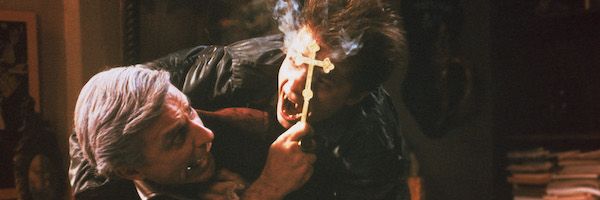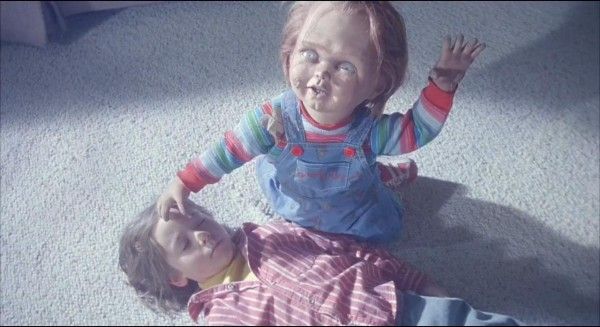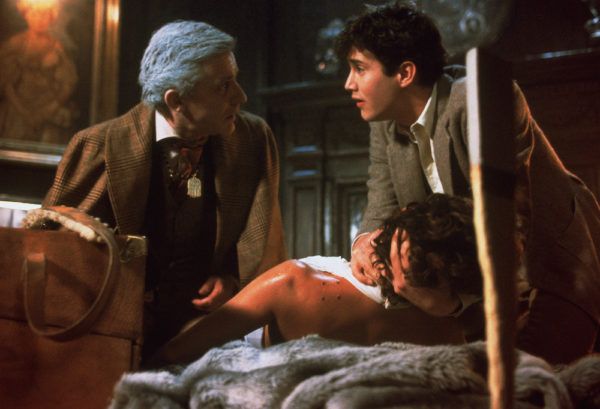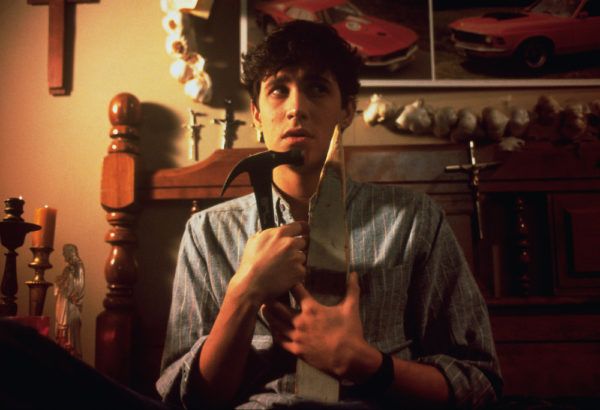If you're looking to take stock of where horror is these days, it can't hurt to ask one of the greats. Tom Holland is, inarguably, one of the greats. The writer/director had been working in Hollywood for years when he pulled off an impossible task, writing a shockingly great script for a sequel to Alfred Hitchcock's Psycho, a film that didn't need a sequel if there ever was one, much less 20 years later. Holland made his directorial debut with the aggressively 80s vampire-next-door classic, Fright Night, following that up by introducing a new slasher icon in 1988's Child's Play. So it was an uncharacteristically delightful October surprise to hop on the phone with Holland to not only discuss what horror was like back then, but to dig into the modern concept of, ahem, "elevated horror", the in-vogue phrase that amounts to the idea a horror movie can't be good if it's just a horror movie.
"I think what you're talking about, with elevated horror, it sounds pretentious to me," Holland says. The filmmaker, now 77 and celebrating 35(!) years of Fright Night, is quick to clarify.
"But I'm the guy that did the '80s and '90s horror movies. Now, if you talk to Mike Flanagan, who I think is terrific, he'd probably disagree with me. If you talked to [Andy] Muschietti, he'd probably disagree with me," Holland says. "But you can tell [elevated horror] in the reviews. I can't think of the titles now, but Hereditary is one of them. There's the one...the guy who gets nominated at Cannes all the time. Yes, there are films that seem to carry more intellectual weight with them. The one about the ballerina that nobody could figure out."
Luca Guadagnino's Suspiria, for the record, a movie that's quite moving, visually stunning, and, also, kind've pretentious! It's a complicated thing to define, surely, but one of the most beautiful things about horror is that it's greatest films—and that includes high-brow and low-brow—have always had the same core of humanity. It's a concept Holland sums up:
"If you're talking about something that travels worldwide, and that has a chance of lasting, like, say, The Exorcist, you have to have people that you like in danger," he says. "The story has to be simple enough, basically, that you get it in the first...five, seven, eight minutes. Then once you have that, the emotional life of the people involved in the dangerous or traumatic situation, that becomes where you can elevate the film. The emotional life of the characters involved. And quite often that plays as subtext. What isn't said."
He pauses, then admits: "The question is an hour discussion, and there's no right or wrong to it."
That, inarguably, is true. The "definition" of horror is different from person to person, which makes it both the hardest genre to recommend and the most fun to talk about; what scares you might not scare me, might scare them, etc etc. For Holland, it's generational. Anyone coming of age with the brilliance of Get Out, the detailed dread of The Witch, even the subversiveness of Jennifer's Body is just choosing the classics that will one day be celebrating 35th anniversaries and beyond. If horror does one thing, it endures.
"In my time, that would have been The Exorcist, it would have been Tobe Hooper's Chainsaw Massacre," Holland says. "It would have been George Romero's Night of the Living Dead. I can't tell you what that was like. The first film that blew my mind, that made me aware of editing, was Psycho. Psycho was the granddaddy of all of them and it changed everything. I mean, that was what kicked open the floodgates, and that that's the beginning of the slasher. It's also the beginning of brilliant filmmaking in horror."
He laughs. "Psycho is elevated."
But there is a crucial ingredient missing from the sauce these days, Holland says. "I do tend to find [horror] sort of self-conscious and pretentious at this point. The '80s and '90s, before it tailed off, was fun. F-U-N. Fun. And it's harder to find fun right now in horror."
Whether or not you agree with that, you simply cannot deny that Fright Night itself remains, 35 years later, extremely fun. You know the story: Teenage horror fan Charley Brewster (William Ragsdale) discovers his new neighbor (Chris Sarandon) is a vampire and enlists the washed-up host of an old horror show, Peter Vincent (Roddy McDowall), to help stop him. "What's happened with Fright Night, I think," says Holland, "is it's become multi-generational."
"It was an R when it was released because there was one shot of a woman's bosom. But now it's like PG or PG-13, if that," he continues. "Grandparents are sharing it with their grandchildren. It's a way to introduce horror to younger people that aren't particularly aware of it. You can show Fright Night to a seven, eight, ten year old, and you're okay. Less so with Child's Play and some of the other stuff I've done. But Fright Night, it's become a family horror film, if that makes any sense."
If it's a family film, it's one chock-full of gore and goo. One of the reasons Fright Night stays a staple of Halloween marathons is its abundance of oozing vampire FX, full-body werewolf transformations, and a literal jaw-dropping piece of makeup work that still haunts my evenings. It's one of those practical bonanzas that somehow feels like an extremely specific snapshot of the late-80s and timeless all together. "In-camera effects are vastly superior and vastly preferable, because they're authentic and they're real," Holland tells me. The effects on Fright Night were provided by Richard Edlund and his crew at Boss Films, hot off of the 80s-defining hit, Ghostbusters. (Some of Edlund's other credentials include little-known flicks like The Empire Strikes Back and Raiders of the Lost Ark.)
"It was almost accidental," Holland says. "Columbia was looking at a way to keep [Edlund's crew] employed so they could use them on their next big movie. It was like a holding pattern, giving them to this little, little film that nobody thought would do anything called Fright Night."
The holding pattern paid off. Thirty-five years later, Fright Night remains a gem, elevated or not. "That's one of the reasons I think it's lasted today," Holland says. "It feels authentic."




